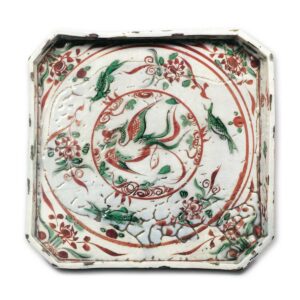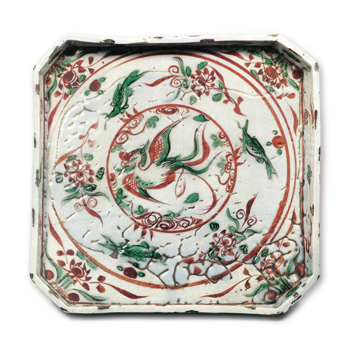
Height 7.2 cm, mouth diameter 29.5 x 30.5 cm, four legs
Tokyo National Museum
This is a representative example of Okuda Yonkawa’s skill in copying Koshu akae. Not only the pictorial design on the surface and sides, but also the white glaze surface, is a good example of the Koshu akae style. The shape of the vessel, however, is purely Japanese, with the four sides cut off at the corners.
The main characteristic of Kyoyaki ware produced at the end of the Edo period after Yuikawa is that while it copied Chinese ceramics, the shapes of the vessels and the arrangement of the patterns were made in a Japanese style. The semi-polished porcelain body is covered with a white glaze with a slightly bluish tinge, and a circular window appears in the center of the prospective area. The corners of the low rim are glazed in a manner similar to that of Kureshu akae, and the glaze is also shriveled in the center of the rim. The four sides of the bowl are decorated with a lotus design, and the four sides of the bottom are decorated with cloud-shaped legs and floral designs.
Although unmarked, there is no doubt that it was made by Yi River. It was donated to the Tokyo National Museum by Mr. Masatoshi Okochi.



